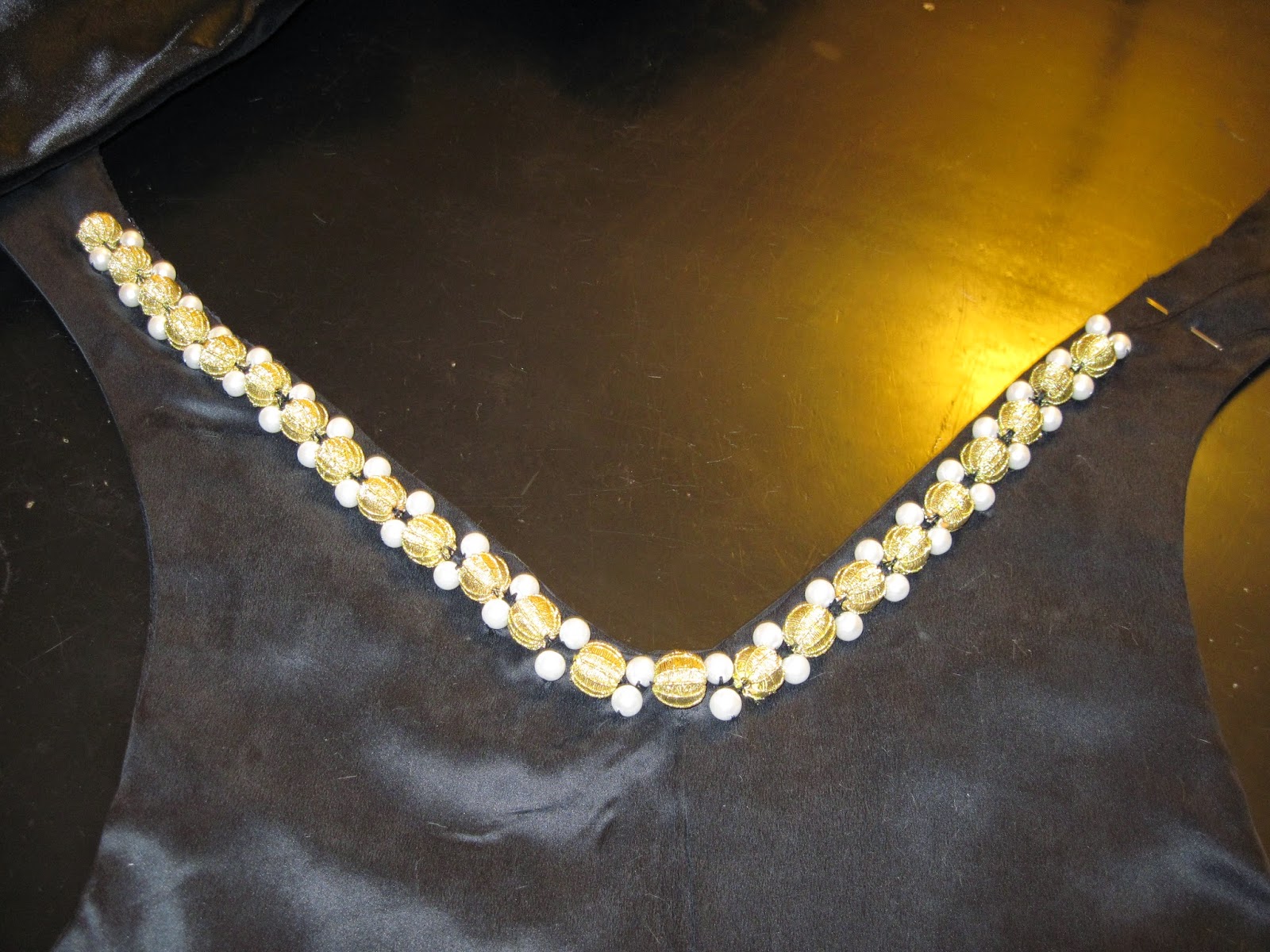 |
| Beads completed and sewn to kirtle |
New research has also encouraged me to place all of the embellishment on the neckline of a supportive kirtle rather than the edge of my gown as I had done before. This kirtle will also replace the corset I had been wearing under my gown. The first kirtle had varied amounts of success. It was supportive improved the silhouette, but the "cups" of the kirtle were too small for my bust. This version is more accommodating. The kirtle also laces under the arm on both sides to allow for more flexibility and an unbroken neckline under my gown.
 |
| Progress of embellishing the kirtle. Kirtle bodice is made of linen canvas, reeds, and charcoal silk. |
Original post on Anne Bolyen's Gold Embelishments

Comments
Post a Comment